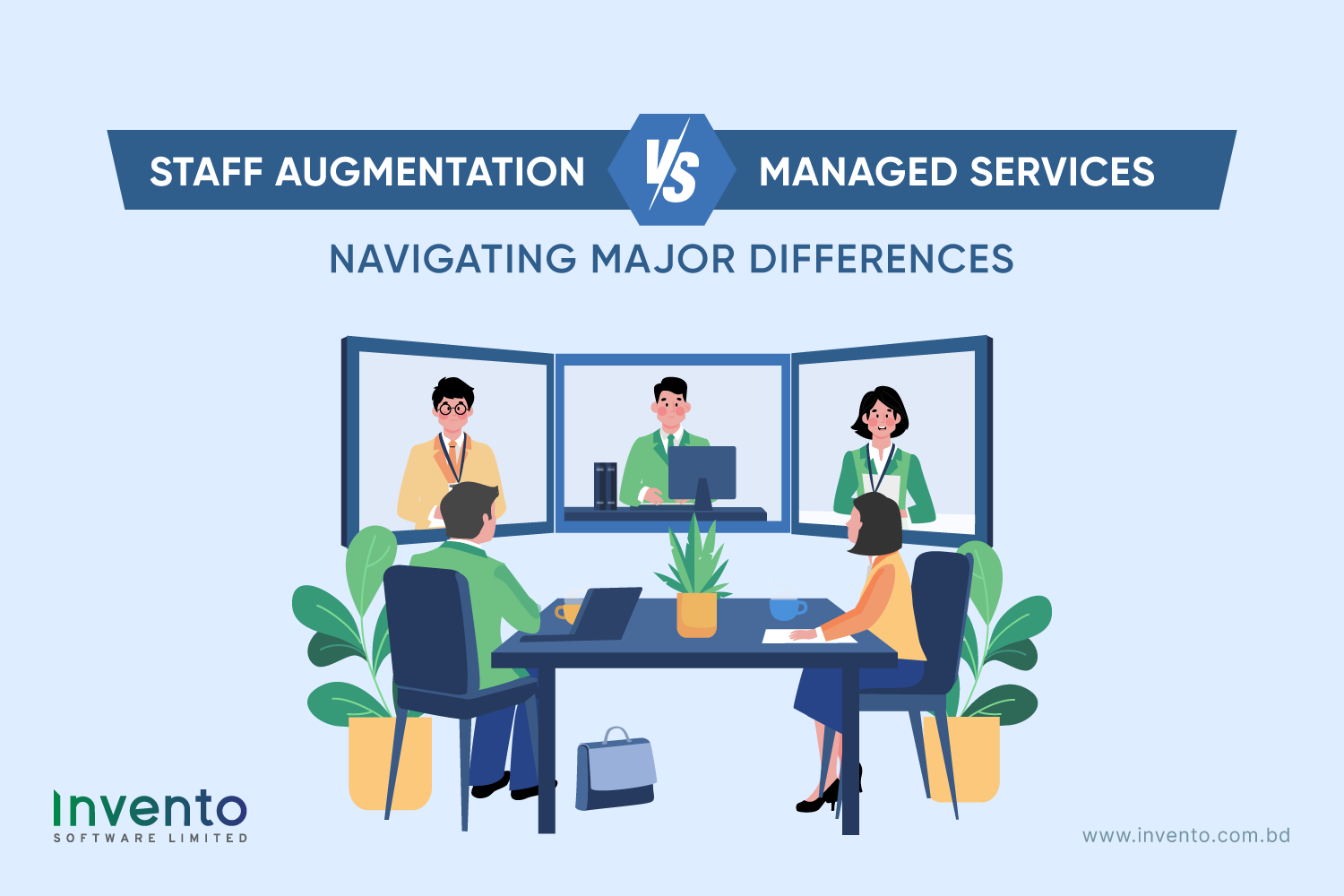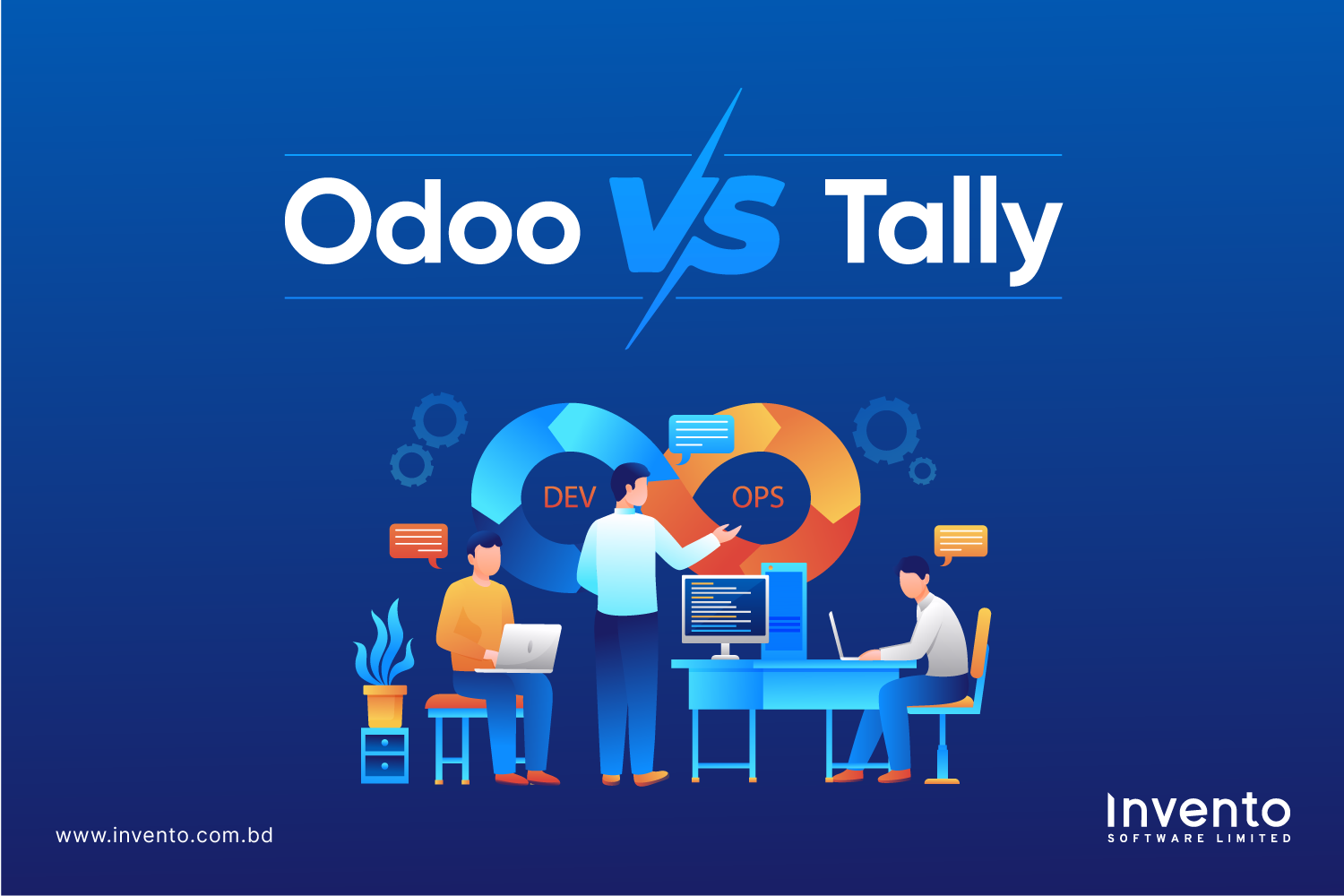In the recent business arena, organizations or industries often face the challenge of conducting their daily operations successfully. Two dominant strategies are followed mostly to address this, which are staff augmentation and managed services. This article examines these models deeply, exploring their definitions, benefits, dissimilarities, and a walkthrough of choosing the appropriate approach that will help your business.
Let’s understand at first what Staff Augmentation is.
What is Staff Augmentation?
Staff augmentation is a feasible outsourcing strategy where businesses hire third party specialists for filling specific areas of skill gaps in their teams. These external professionals work with your employees to ensure impactful collaboration and efficient project implementation.
How It Works for You:
- Identifying the skill gap or needs.
- Engaging a company for sourcing fitting professionals.
- Integrating the outside experts into your existing team for the project’s efficiency.
Core Benefits:
- Flexibility: You need to widen your team up or down based on task or program requirements.
- Cost-Efficient: You should steer clear of lengthy commitments and excluded costs.
- Entrance to Expertise: Draw upon specialized or required skills only.
- Prompt Hiring: Minimize time in the hiring process compared to traditional recruitment.
What are Managed Services?
Usually, Managed services include outsourcing the duty to maintain and anticipate the needs for procedures and functions for improving operations and lessen extra costs. Generally, this is a consistently active involvement where the services provider handles the entire system.
How It Works for You:
- Introducing the level of services and performance standards.
- The service provider (MSP) is supposed to oversee the operations, performance, and other support.
- Reporting and reviewing on a regular basis ensures engagement with business objectives.
Core Benefits:
- Comprehensible Costs: There are fixed monthly fees which help you in budgeting.
- Hands-on Supports: Ongoing tracking and monitoring reduces downtime.
- Access to Updated Tech: MSPs often provide the facility of latest tools and technologies.
- More Focused on Main Business: Helps internal team members concentrate on strategically innovative initiatives.
You might be thinking now about the primary distinctions between Staff Augmentation and Managed Services.
Top Differences at a Glance: Staff Augmentation vs. Managed Services
In the following table, we have outlined the core distinctions between staff augmentation and managed services for your convenience:
| Facts | Staff Augmentation | Managed Services |
| Control | High–client handles the augmented staff | Low-MSP handles the service or product delivery |
| Flexibility | High-scale resources as required | Moderate-changes might need contract adjustments |
| Cost Varieties | Variable-payment per resource/hour | Fixed-expected monthly fees |
| Expertise Access | Specific skills for required positions | Broad expertise among operations |
| Integration | Integrated into operational teams | Works independently |
| Responsibility | Client is mainly responsible for results | MSP is responsible for service results |
| Duration | Shorter to mid-term engagements | Long-term partnerships |
| Best For | Specific skills as projects require | Continuous operations and comprehensive service management |
Advantages of Staff Augmentation
1. Fast Scalability:
It allows adjusting a team quickly for meeting projects’ demands without making it lengthy.
2. Low Cost:
Stuff Augmentation can help you with expenses (e.g.,) related to recruitment, training, and perks.
3. Access to Specialized Skills:
As there are multiple specialized skills present, Stuff Augmentation involves professionals for required technologies or methodologies.
4. Increased Flexibility:
There are chances of adapting to changing project requirements with flexibilities.
5. Knowledge Share:
External experts can include new skills and understanding to the internal team.
Advantages of Managed Services
1. Predictable Costs:
Fixed expenses make financial planning easier and cut unnecessary expenses down.
2. Active Maintenance:
Continuous monitoring prevents issues before they escalate.
3. Access to Latest Technologies:
Since MSPs invest in presently available tools and practices, it benefits the client without any additional charges.
4. Focus on Key Activities:
Existing teams may concentrate on strategically designed goals/objectives while MSPs manage regular operations.
5. Adaptability:
Easily adjustable services to align with business goals for growth.
Budget Comparison: Staff Augmentation vs. Managed Services
Understanding the cost implications of each model is also essential for you. The following table gives you a comparative overview of what you might be looking for.
| Budget Facts | Staff Augmentation | Managed Services |
| Primary Investment | Low – payment for resources | Moderate to High – setup and transition expenses |
| Continuous Costs | Variable – depends on your resource usage | Fixed – agreed monthly payment |
| Infrastructure Expenses | Client is responsible for the cost | MSP provides infrastructure |
| Training Costs | Client bears the onboarding | MSP manages training and upskilling |
| Long-term Savings | lower potential for short-term programs | Better savings than extended durations |
When Should You Imply Staff Augmentation?
You may consider staff augmentation:
- If you need to fill skill gaps quickly for some specific programs.
- If specialized experts are not available internally.
- You look for maintaining project management and results.
- Flexibility in organizing the team is crucial.
- The project duration usually is shorter than medium-term.
When Should You Go for Managed Services?
Managed services are great for you:
- When you want to outsource the entire operations for efficient outcomes.
- If your priorities are predictable and consistent service delivery.
- When you feel the need to access a broad range of methodologies and technologies.
- When you desire to minimize the burden on existing teams to focus on the main business.
- When you hope for long-term partnerships and support for ongoing projects.
Final Thoughts
Hence, choosing between staff augmentation and managed services actually depends on your organization’s specific needs, project scopes, and long-term goals. You can make an informed decision only by understanding the nuances of each model accurately, which go with your strategically designed goals and operational needs.
Frequently Asked Questions (FAQ)
Q1: Is it possible to use both staff augmentation and managed services simultaneously?
The answer is a “Yes”, but for some cases. For example, many organizations adopt a hybrid approach according to their needs for specific projects,while using managed services for another operation.
Q2: Can managed services be more cost-effective for me in the long run?
Yes, managed services can offer cost savings, minimized downtime, and expected budgeting.
Q3: How rapidly can I onboard resources by staff augmentation?
Staff augmentation allows you for quick onboarding, sometimes faster than traditional recruitment, addressing immediate project needs.







